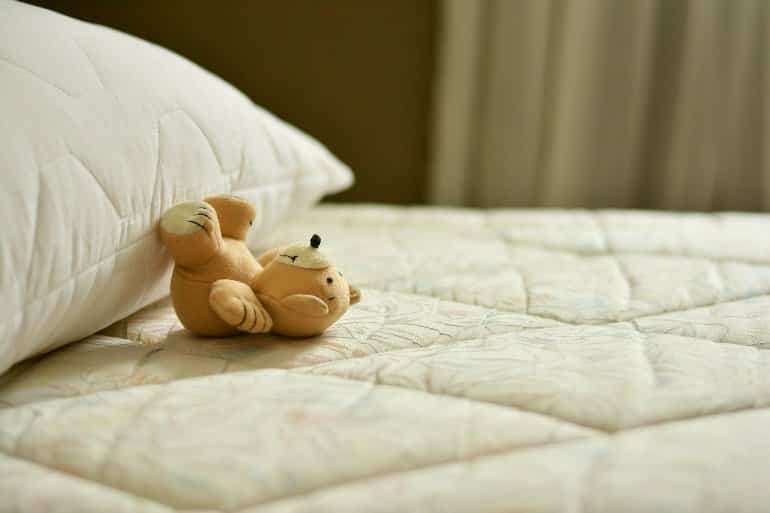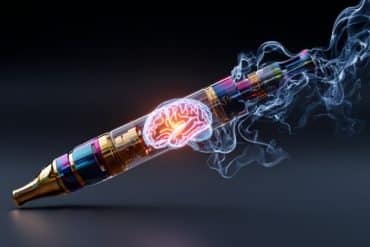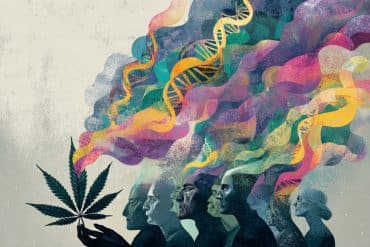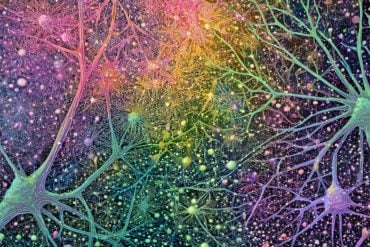Summary: A study in fruit fly models of autism reveals sleep disruption associated with the neurodevelopmental disorder is associated with elevated levels of serotonin. The origin of the higher levels of serotonin was discovered to be in glial cells in the blood-brain barrier.
Source: Radboud University
Bad sleep causes severe health issues and affects our ability to concentrate, memorize, and cope with challenging situations. Individuals with neurodevelopmental disorders such as autism and intellectual disability, frequently suffer from sleep problems. However, little is known about their underlying mechanisms.
In Science Advances, a Dutch-American research team, coordinated by Radboudumc, now describes how these problems can arise.
Mimicking two genetic causes of autism in fruit flies, they uncovered that flies show the same sleep problems as the patients, and that the disturbed sleep is caused by high levels of serotonin – also frequently observed in autism.
Moreover, they found that the origin of high serotonin and sleep problems resides on the glial cells of the blood-brain barrier. This completely new information sheds light on sleep problems in humans and even suggests a possible treatment.
Poor sleep seriously affects cognitive abilities and quality of life. Already vulnerable individuals with autism and related neurodevelopmental disorders suffer particularly often from sleep disturbance, and with them their families as well. Yet, hardly any research has been conducted into the underlying mechanisms of these sleep problems.
A Dutch-American team of researchers coordinated by professor Annette Schenck, in collaboration with professor Tjitske Kleefstra – both at Radboudumc – has investigated this problem in humans as well as in fruit flies.
Schenck: “We first looked very closely at the sleep problems in two specific patient groups with neurodevelopmental disorders. They have mutations in the CHD8 gene, a leading genetic cause of autism, or in a closely related gene, CHD7, giving raise to CHARGE syndrome.
“We see that the bad sleep in these disorders particularly comes from problems falling and staying asleep, which causes night awakenings and low sleep quality. We call this problem sleep fragmentation. It is frequent in autism in general, but even more frequent in the individuals with mutations in CHD8 or CHD7.
“According to affected families, these sleep problems are one of their biggest problems in daily life management. This motivated us to study sleep disturbances, in context of these genes and disorders further”.
From humans to fruit flies
To be able to look into brains, investigate problems, and test interventions, researchers turn to animal models. In the fruit fly, an animal model that has led to multiple Nobel prizes, CHD8 and CHD7 are represented by a single gene termed kismet. Mutations in kismet in the fruit fly can therefore tell a lot about mutations in those two “orthologous” genes in humans.
Mireia Coll-Tané, researcher in Schenck’s group and lead author of the study published in Science Advances: “We see that flies with mutations in kismet have problems staying asleep, waking up during night extremely frequently. They show the same characteristics that we see in people with mutations in CHD8 and CHD7.”
Not the neurons, but the glial cells
Schenck’s research group is specialized in fruit fly research on genes causing neurodevelopmental disorders. They routinely generate flies with mutations in genes that correspond to the disease genes, and look at changes in behaviors or other properties of the nervous system that are present in both humans and flies.
Schenck: “when Mireia found the sleep fragmentation to be present also in flies, we knew that can use our model with all of its advantages to find out where this problem comes from”.
They found that kismet is important for good sleep of adult flies but also already earlier during development, and that the adult sleep defects result from decreased kismet during the developmental period.
Coll-Tané: “We also found that kismet was not important in the neurons, the cells that are classically seen to regulate behavior, but in the other main cell type present in the brain: the glial cells. Glia have many important functions, such as supporting neurons, cleaning up waste and contributing to the blood-brain barrier. We saw that kismet is important, already in early development, in a group of only 300 glial cells that form the blood-brain barrier in the fly. They are the origin of the sleep fragmentation.”
Surprising role for serotonin
Often the neurotransmitter dopamine plays a role in sleeping problems. This study also looked at this, but dopamine levels were normal. In contrast, the neurotransmitter serotonin appeared to be important.
Coll-Tané: “When we reduce kismet specifically in glia, we found the concentration of serotonin in fruit fly heads to be doubled. This is a very interesting finding because increased serotonin, also referred to as hyperserotonemia, is one of the most commonly found biomarkers in autism.”
In a series of further genetic and drug experiments, the researchers provided evidence that the increased serotonin levels during development are responsible for kismet’s sleep fragmentation.
Coll-Tané: “Our work has linked a leading genetic cause of autism to a frequent biomarker and an important clinical complaint in autism. We propose that our identified mechanism is relevant to autism more widely”.
Future therapy?
An important question is whether the sleep problems associated with the developmental disorders can be tackled after all. It must be a treatment that works in adults (ie after development), and that is non-invasive and safe.

Schenck: “Our co-authors in Philadelphia recently developed sleep-restriction therapy for fruit flies – SRT for short. An equivalent intervention is widely used in humans, in otherwise healthy individuals with insomnia. But it is rarely applied to autism and neurodevelopmental disorders, perhaps because sleep defects are considered an inevitable consequence of the genetic mutations. But the behavioral therapy succeeded! A simple light regime mimicking shorter nights made the flies sleeping better, effectively reversing the sleep fragmentation. And this despite that the origin of the problems lies earlier in development.”
Further research in humans
With the article in Science Advances, further research in humans is obvious. Clinical geneticist Kleefstra:
“We have already shown in our article that CHD7 and CHD8 are expressed in the human blood-brain barrier, both during development and adulthood. Now we aim to collect further clinical data and apply SRT to these patients, in close collaboration with the expert sleep clinic Kempenhaeghe in Heeze. Together, we are expanding our ‘human-to-fruit-fly-and-back’ strategy to a number of other disorders.”
Clearly, the path to more fascinating sleep research in flies and humans is up for grabs with this publication.
About this autism research news
Source: Radboud University
Contact: Pieter Lomans – Radboud University
Image: The image is in the public domain
Original Research: Open access.
“The CHD8/CHD7/Kismet family links blood-brain barrier glia and serotonin to ASD-associated sleep defects” by Mireia Coll-Tané, Naihua N. Gong, Samuel J. Belfer, Lara V. van Renssen, Evangeline C. Kurtz-Nelson, Milan Szuperak, Ilse Eidhof, Boyd van Reijmersdal, Isabel Terwindt, Jaclyn Durkin, Michel M. M. Verheij, Chang N. Kim, Caitlin M. Hudac, Tomasz J. Nowakowski, Raphael A. Bernier, Sigrid Pillen, Rachel K. Earl, Evan E. Eichler, Tjitske Kleefstra, Matthew S. Kayser, Annette Schenck. Science Advances
Abstract
The CHD8/CHD7/Kismet family links blood-brain barrier glia and serotonin to ASD-associated sleep defects
Sleep disturbances in autism and neurodevelopmental disorders are common and adversely affect patient’s quality of life, yet the underlying mechanisms are understudied.
We found that individuals with mutations in CHD8, among the highest-confidence autism risk genes, or CHD7 suffer from disturbed sleep maintenance. These defects are recapitulated in Drosophila mutants affecting kismet, the sole CHD8/CHD7 ortholog.
We show that Kismet is required in glia for early developmental and adult sleep architecture. This role localizes to subperineurial glia constituting the blood-brain barrier.
We demonstrate that Kismet-related sleep disturbances are caused by high serotonin during development, paralleling a well-established but genetically unsolved autism endophenotype. Despite their developmental origin, Kismet’s sleep architecture defects can be reversed in adulthood by a behavioral regime resembling human sleep restriction therapy.
Our findings provide fundamental insights into glial regulation of sleep and propose a causal mechanistic link between the CHD8/CHD7/Kismet family, developmental hyperserotonemia, and autism-associated sleep disturbances.






